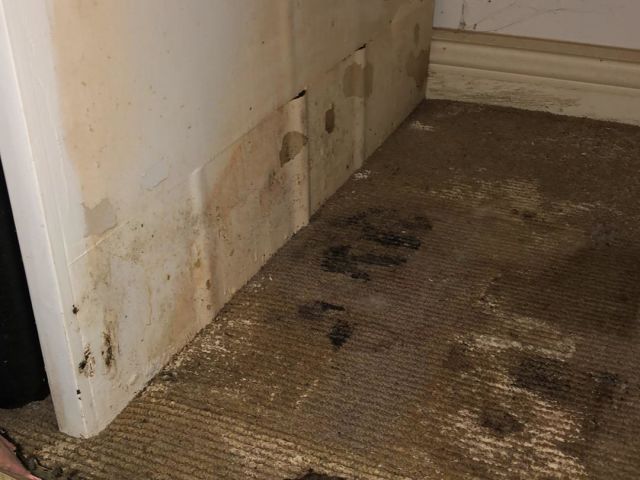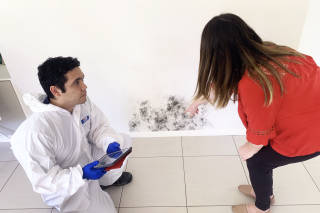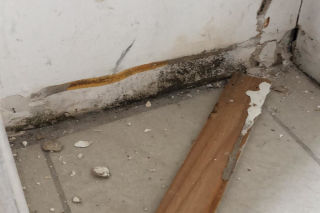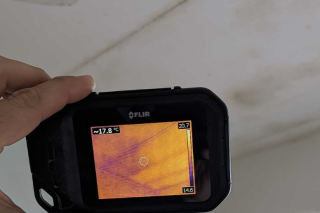Don't Ignore Mould In The Home
In this article, we will discuss the effects of mould on your health and what can be done to fix the issue in your home.

For mould to thrive, moisture, oxygen, warmth, and organic matter that will serve as food are necessary. Mould growth is generally a symptom of the main issue. Among the numerous conditions that mould need to grow, the only thing that you can control is moisture. Mould feed off this moisture and begin to spread.
In a report released by the World Health Organization, they mentioned that in Europe alone, almost ten to 50% of their indoor environments are damp. Such a condition is enough for mould to grow. This becomes a health risk because this is the same environment where most people work, live, or play.
Mould and its health risks
There are many contradicting views when it comes to mould-linked illnesses. Though there were countless worldwide reports of mould-linked fatalities, however, health authorities claim that there is no direct or causal link that was proven.
What the NHS and WHO agreed on now is that mould exposure can leave one susceptible to asthma, allergic rhinitis, infections, and other respiratory symptoms. Touching or inhaling mould spores are also said to trigger allergic reactions like skin rashes, red eyes, runny nose, and sneezing. Mould was even cited as one of the most potent asthma triggers.
There are other symptoms that have been reported to be linked to mould spores exposure and these include the following:
- Nosebleeds
- Difficulty in breathing
- Tightness of the chest
- Nausea
- Rashes
- Skin irritation
- Headaches
- Throat irritation
- Eye irritation
- Constant tiredness
- Sneezing
- Coughing
Fortunately, while there are thousands of mould varieties, only ten of them are actual causes for health concerns. The health concerns associated with these mould varieties are allergies, bronchitis, sinusitis, and other respiratory conditions.
Infants, young children, people with respiratory problems, people with skin conditions, and the elderly are highly vulnerable to mould. Also, people who are immunocompromised share the same vulnerability as those mentioned above.
Mould and structural damage
Mould also feed on soap, fabrics, cardboard, paper, wood, and other organic matter. As they thrive, they can also cause damage to the surface. This damage can, later on, devalue and compromise the building’s interior. As mould prefer more nutritious materials than wood, they can also feed on lumber. The mould will not eat the wood or cause it to rot, however, it can indicate a bigger and deeper problem -- a high level of surface moisture.
If such conditions are not remediated, wood-decaying fungi will also grow on the surface. This can lead to additional damage. In fact, brown rotting is viewed as the most destructive kind of fungi-related deterioration. If the fabric of the building becomes excessively damp, surface damage in the form of paint and paper peeling follows. In severe cases, it might end with blister plaster and masonry decay. And if the timber rots, there will also be higher chances of termite attacks that will further exacerbate the damage.
Dampness during winter should also not be ignored as this can freeze porous building structures and materials. And as the moisture freezes, the surfaces of the tiles and surrounding bricks are shattered. If the shattering recurs, over time, the effect will be far more significant. If the surface is left damp over an extended period, the building walls can become unstable. In that case, the building’s structural integrity might be compromised. A structural engineer might be needed to inspect the building before it can be occupied again.
The damage caused on the structure, the repairs after, and the fees for inspection can take a toll on your budget. And to make matters worse, your home insurance might not be used to pay for these expenses.
Mould Remediation and home insurance coverage
In Australia and in some major countries in the world, mould damage, removal, or cleaning may not be covered in the home insurance policy. Even if mould is an outcome of an insured event, your insurer will still not reimburse you for the money you paid for any mould-related damages.
What can be done
There are ways in which you can restore the mould in your home. The goal is to bring back your property to normal mould ecology. To do this may require some research and some hard work. Some steps involved.
Mould Testing - if you are having allergic reactions, it may be worth testing the environment to confirm if there is hazardous mould present. For a comprehensive review of reasons to test for mould, signs of mould, kinds of mould testing and our mould testing services, please read our "Mould Testing Explained" article.
Mould Inspection - if you are unsure on the location of the mould and you want to problem fixed. It may be worth getting a professional mould inspector to find the source and provide correctional activity recommendations.
Mould Removal Quote - If you need a quote to remove the mould we can provide a mould inspection first to let you know the source and provide any testing as necessary. Then we can provide a scope of works on the remediation and a quote to remove it.
DIY mould air testing - If you prefer to do the mould testing yourself. Be sure to call to call us. This could be a cost effective way to do your mould testing at your property.
In conclusion, if you suspect the mould growth in your home is affecting your health, it should be investigated. NLR provides mould removal service in Brisbane and Sydney and can provide mould inspection and mould testing to help confirm the source of the mould. We can also provide recommendations in the correction of the moisture source.



